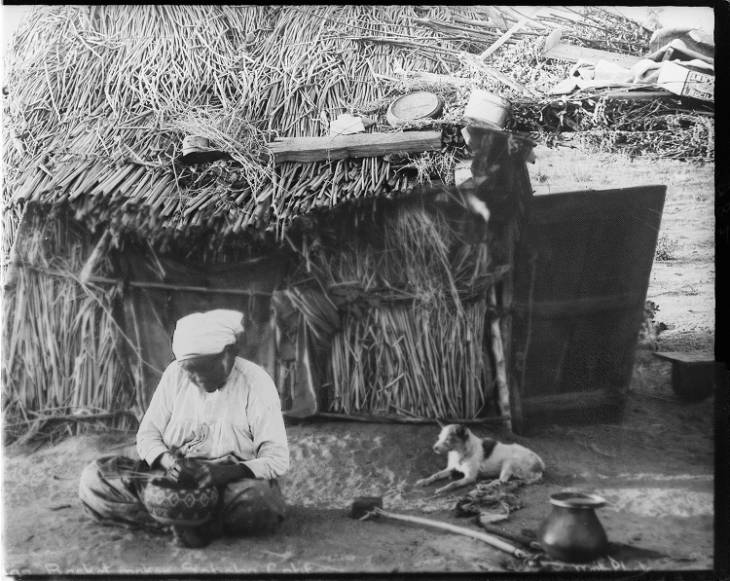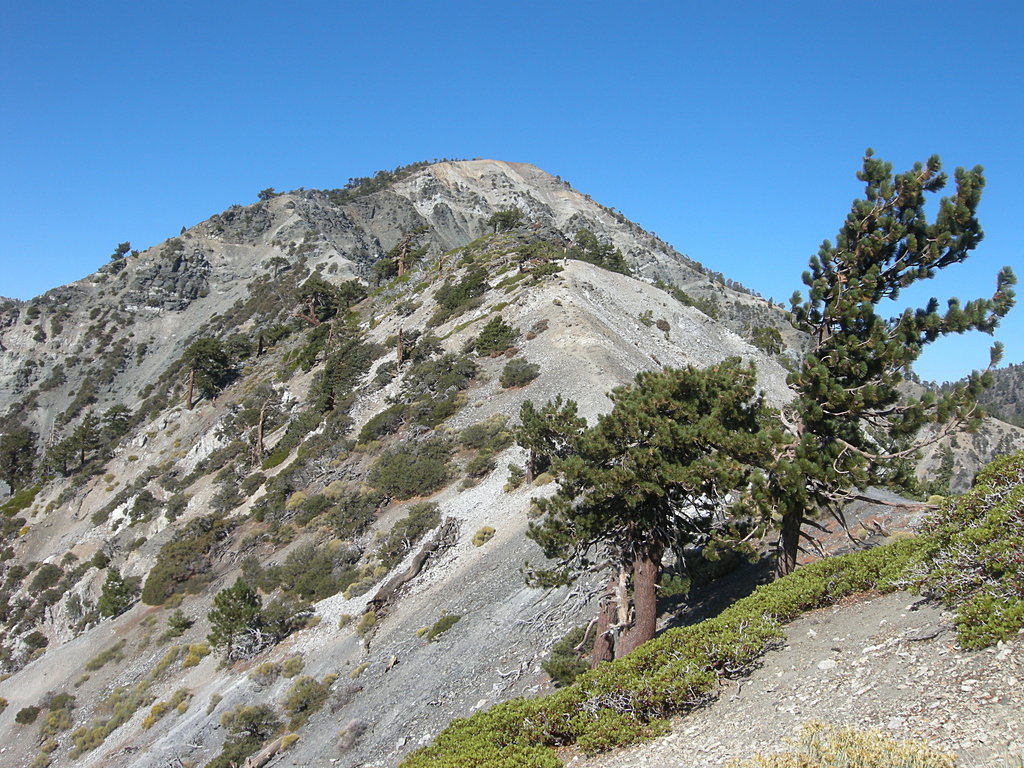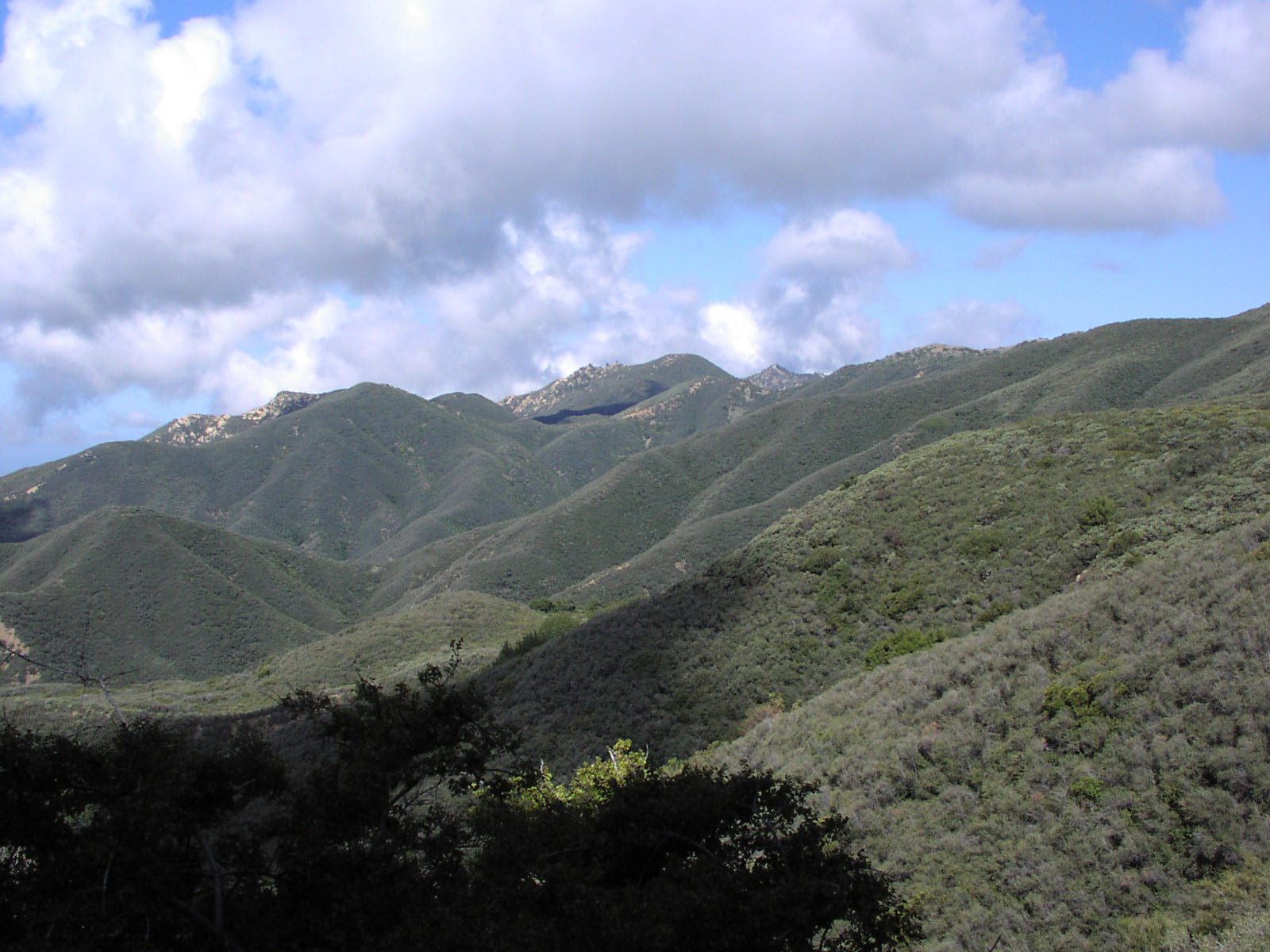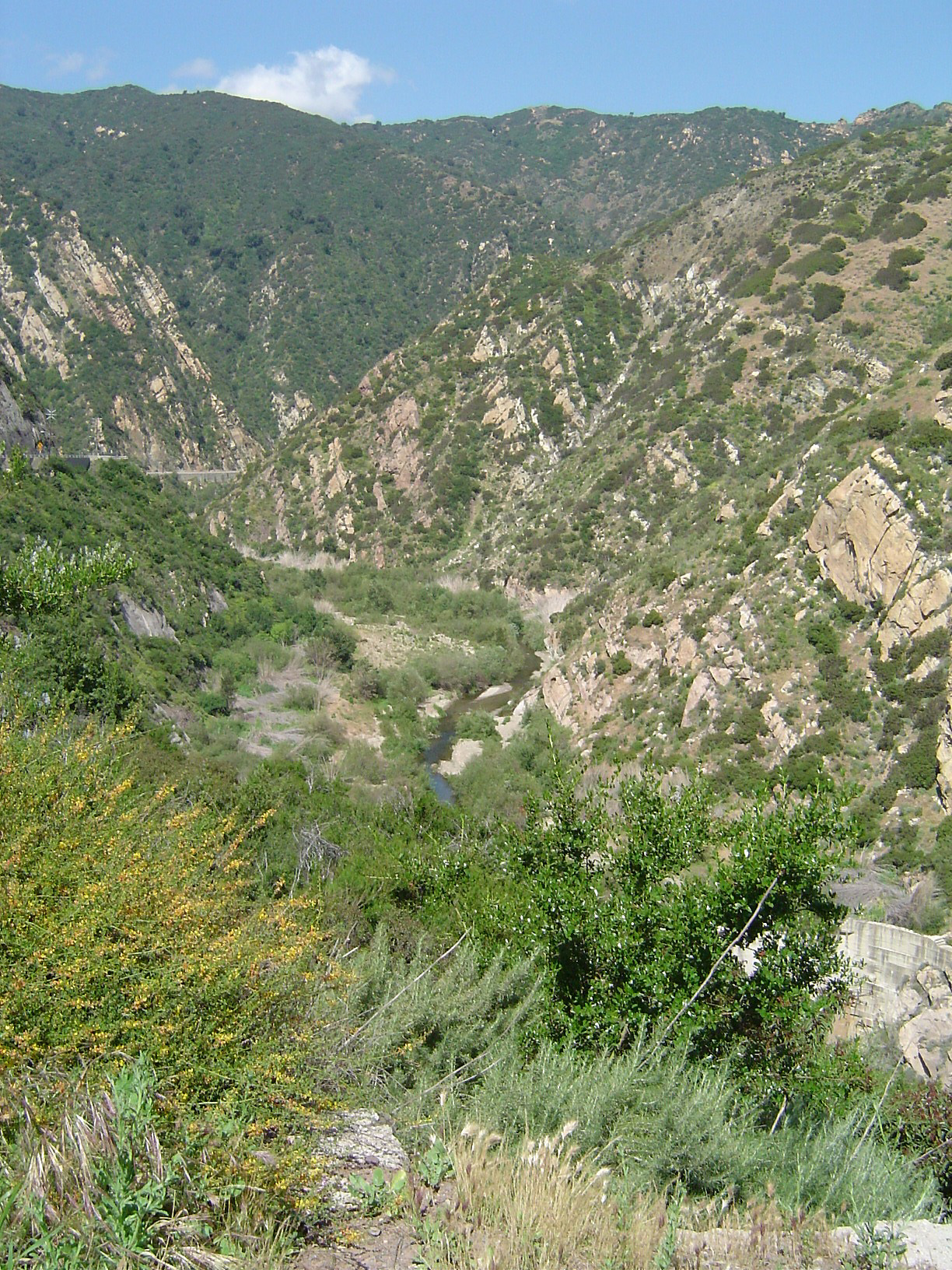|
Arctostaphylos Parryana
''Arctostaphylos parryana'', with the common name Parry manzanita, is a species of manzanita. Description ''Arctostaphylos parryana'' is an erect manzanita, standing on red-barked stems and reaching up to two meters in height. The leaves are bright green, generally oval in shape and pointed. The small pink-tinted white flowers are borne in densely bunched inflorescences. The fruit is a rounded drupe which contains two or more seeds which have fused into one body. The fruit was a food of the Luiseño of Southern California. Distribution This shrub is endemic to California, where it grows in the western section of the Transverse Ranges, from coastal Santa Barbara County to the San Gabriel Mountains. This is a manzanita of chaparral and low-elevation coniferous forest ecosystems. See also *California chaparral and woodlands The California chaparral and woodlands is a terrestrial ecoregion of southwestern Oregon, northern, central, and southern California ( United States) ... [...More Info...] [...Related Items...] OR: [Wikipedia] [Google] [Baidu] |
Arctostaphylos
''Arctostaphylos'' (; from "bear" and "bunch of grapes") is a genus of plants comprising the manzanitas () and bearberries. They are shrubs or small trees. There are about 60 species, of ''Arctostaphylos'', ranging from ground-hugging arctic, coastal, and mountain species to small trees up to 6 m tall. Most are evergreen (one species deciduous), with small oval leaves 1–7 cm long, arranged spirally on the stems. The flowers are bell-shaped, white or pale pink, and borne in small clusters of 2–20 together; flowering is in the spring. The fruit are small berries, ripening in the summer or autumn. The berries of some species are edible. ''Arctostaphylos'' species are used as food plants by the larvae of some Lepidoptera species including ''Coleophora arctostaphyli'' (which feeds exclusively on ''A. uva-ursi'') and '' Coleophora glaucella''. Distribution Manzanitas, the bulk of ''Arctostaphylos'' species, are present in the chaparral biome of western Nor ... [...More Info...] [...Related Items...] OR: [Wikipedia] [Google] [Baidu] |
Inflorescence
An inflorescence is a group or cluster of flowers arranged on a stem that is composed of a main branch or a complicated arrangement of branches. Morphologically, it is the modified part of the shoot of seed plants where flowers are formed on the axis of a plant. The modifications can involve the length and the nature of the internodes and the phyllotaxis, as well as variations in the proportions, compressions, swellings, adnations, connations and reduction of main and secondary axes. One can also define an inflorescence as the reproductive portion of a plant that bears a cluster of flowers in a specific pattern. The stem holding the whole inflorescence is called a peduncle. The major axis (incorrectly referred to as the main stem) above the peduncle bearing the flowers or secondary branches is called the rachis. The stalk of each flower in the inflorescence is called a pedicel. A flower that is not part of an inflorescence is called a solitary flower and its stalk ... [...More Info...] [...Related Items...] OR: [Wikipedia] [Google] [Baidu] |
Drupe
In botany, a drupe (or stone fruit) is an indehiscent fruit in which an outer fleshy part ( exocarp, or skin, and mesocarp, or flesh) surrounds a single shell (the ''pit'', ''stone'', or '' pyrena'') of hardened endocarp with a seed (''kernel'') inside. These fruits usually develop from a single carpel, and mostly from flowers with superior ovaries (polypyrenous drupes are exceptions). The definitive characteristic of a drupe is that the hard, lignified stone is derived from the ovary wall of the flower. In an aggregate fruit, which is composed of small, individual drupes (such as a raspberry), each individual is termed a drupelet, and may together form an aggregate fruit. Such fruits are often termed '' berries'', although botanists use a different definition of ''berry''. Other fleshy fruits may have a stony enclosure that comes from the seed coat surrounding the seed, but such fruits are not drupes. Flowering plants that produce drupes include coffee, jujube, ma ... [...More Info...] [...Related Items...] OR: [Wikipedia] [Google] [Baidu] |
Luiseño People
The Luiseño or Payómkawichum are an indigenous people of California who, at the time of the first contacts with the Spanish in the 16th century, inhabited the coastal area of southern California, ranging from the present-day southern part of Los Angeles County to the northern part of San Diego County, and inland . In the Luiseño language, the people call themselves ''Payómkawichum'' (also spelled ''Payómkowishum''), meaning "People of the West." After the establishment of Mission San Luis Rey de Francia (The Mission of Saint Louis King of France), "the Payómkawichum began to be called San Luiseños, and later, just Luiseños by Spanish missionaries due to their proximity to this San Luis Rey mission. Today there are six federally recognized tribes of Luiseño bands based in southern California, all with reservations. Another organized band is not federally recognized. History Pre-colonization The Payómkawichum were successful in utilizing a number of natural resou ... [...More Info...] [...Related Items...] OR: [Wikipedia] [Google] [Baidu] |
Endemism
Endemism is the state of a species being found in a single defined geographic location, such as an island, state, nation, country or other defined zone; organisms that are indigenous to a place are not endemic to it if they are also found elsewhere. For example, the Cape sugarbird is found exclusively in southwestern South Africa and is therefore said to be ''endemic'' to that particular part of the world. An endemic species can be also be referred to as an ''endemism'' or in scientific literature as an ''endemite''. For example ''Cytisus aeolicus'' is an endemite of the Italian flora. ''Adzharia renschi'' was once believed to be an endemite of the Caucasus, but it was later discovered to be a non-indigenous species from South America belonging to a different genus. The extreme opposite of an endemic species is one with a cosmopolitan distribution, having a global or widespread range. A rare alternative term for a species that is endemic is "precinctive", which applies t ... [...More Info...] [...Related Items...] OR: [Wikipedia] [Google] [Baidu] |
California
California is a state in the Western United States, located along the Pacific Coast. With nearly 39.2million residents across a total area of approximately , it is the most populous U.S. state and the 3rd largest by area. It is also the most populated subnational entity in North America and the 34th most populous in the world. The Greater Los Angeles area and the San Francisco Bay Area are the nation's second and fifth most populous urban regions respectively, with the former having more than 18.7million residents and the latter having over 9.6million. Sacramento is the state's capital, while Los Angeles is the most populous city in the state and the second most populous city in the country. San Francisco is the second most densely populated major city in the country. Los Angeles County is the country's most populous, while San Bernardino County is the largest county by area in the country. California borders Oregon to the north, Nevada and Arizona to the ea ... [...More Info...] [...Related Items...] OR: [Wikipedia] [Google] [Baidu] |
Transverse Ranges
The Transverse Ranges are a group of mountain ranges of southern California, in the Pacific Coast Ranges physiographic region in North America. The Transverse Ranges begin at the southern end of the California Coast Ranges and lie within Santa Barbara, Ventura, Los Angeles, San Bernardino, Riverside and Kern counties. The Peninsular Ranges lie to the south. The name Transverse Ranges is due to their east–west orientation, making them transverse to the general northwest–southeast orientation of most of California's coastal mountains.Dibblee Jr, T.W., 1982. Regional geology of the Transverse Ranges Province of southern California. ''Geology and mineral wealth of the California Transverse Ranges'', ''10'', pp.7-26. The ranges extend from west of Point Conception eastward approximately 500 kilometers into the Mojave and Colorado Desert. The geology and topography of the ranges express three distinct segments that have contrasting elevations, rock types, and vegetation. ... [...More Info...] [...Related Items...] OR: [Wikipedia] [Google] [Baidu] |
Santa Barbara County, California
Santa Barbara County, California, officially the County of Santa Barbara, is located in Southern California. As of the 2020 census, the population was 448,229. The county seat is Santa Barbara, and the largest city is Santa Maria. Santa Barbara County comprises the Santa Maria-Santa Barbara, CA Metropolitan Statistical Area. Most of the county is part of the California Central Coast. Mainstays of the county's economy include engineering, resource extraction (particularly petroleum extraction and diatomaceous earth mining), winemaking, agriculture, and education. The software development and tourism industries are important employers in the southern part of the county. Southern Santa Barbara County is sometimes considered the northern cultural boundary of Southern California. History The Santa Barbara County area, including the Northern Channel Islands, was first settled by Native Americans at least 13,000 years ago. Evidence for a Paleoindian presence has been found in the f ... [...More Info...] [...Related Items...] OR: [Wikipedia] [Google] [Baidu] |
San Gabriel Mountains
The San Gabriel Mountains ( es, Sierra de San Gabriel) are a mountain range located in northern Los Angeles County and western San Bernardino County, California, United States. The mountain range is part of the Transverse Ranges and lies between the Los Angeles Basin and the Mojave Desert, with Interstate 5 to the west and Interstate 15 to the east. The range lies in, and is surrounded by, the Angeles and San Bernardino National Forests, with the San Andreas Fault as its northern border. The highest peak in the range is Mount San Antonio, commonly referred to as Mt. Baldy. Mount Wilson is another notable peak, known for the Mount Wilson Observatory and the antenna farm that houses many of the transmitters for local media. The observatory may be visited by the public. On October 10, 2014, President Obama designated the area the San Gabriel Mountains National Monument. The Trust for Public Land has protected more than of land in the San Gabriel Mountains, its foothills and the A ... [...More Info...] [...Related Items...] OR: [Wikipedia] [Google] [Baidu] |
Chaparral
Chaparral ( ) is a shrubland plant community and geographical feature found primarily in the U.S. state of California, in southern Oregon, and in the northern portion of the Baja California Peninsula in Mexico. It is shaped by a Mediterranean climate (mild wet winters and hot dry summers) and infrequent, high-intensity crown fires. Chaparral features summer-drought-tolerant plants with hard sclerophyllous evergreen leaves, as contrasted with the associated soft-leaved, drought-deciduous, scrub community of coastal sage scrub, found often on drier, southern facing slopes within the chaparral biome. Three other closely related chaparral shrubland systems occur in central Arizona, western Texas, and along the eastern side of central Mexico's mountain chains (mexical), all having summer rains in contrast to the Mediterranean climate of other chaparral formations. Chaparral comprises 9% of California's wildland vegetation and contains 20% of its plant species. The name comes fro ... [...More Info...] [...Related Items...] OR: [Wikipedia] [Google] [Baidu] |
Temperate Coniferous Forest
Temperate coniferous forest is a terrestrial biome defined by the World Wide Fund for Nature. Temperate coniferous forests are found predominantly in areas with warm summers and cool winters, and vary in their kinds of plant life. In some, needleleaf trees dominate, while others are home primarily to broadleaf evergreen trees or a mix of both tree types. A separate habitat type, the tropical coniferous forests, occurs in more tropical climates. Temperate coniferous forests are common in the coastal areas of regions that have mild winters and heavy rainfall, or inland in drier climates or montane areas. Many species of trees inhabit these forests including pine, cedar, fir, and redwood. The understory also contains a wide variety of herbaceous and shrub species. Temperate coniferous forests sustain the highest levels of biomass in any terrestrial ecosystem and are notable for trees of massive proportions in temperate rainforest regions. Structurally, these forests are rather ... [...More Info...] [...Related Items...] OR: [Wikipedia] [Google] [Baidu] |
California Chaparral And Woodlands
The California chaparral and woodlands is a terrestrial ecoregion of southwestern Oregon, northern, central, and southern California ( United States) and northwestern Baja California ( Mexico), located on the west coast of North America. It is an ecoregion of the Mediterranean forests, woodlands, and scrub biome, and part of the Nearctic realm. Setting Three sub-ecoregions The California chaparral and woodlands ecoregion is subdivided into three smaller ecoregions. * California coastal sage and chaparral ecoregion: In southern coastal California and northwestern coastal Baja California, as well as all the Channel Islands of California and Guadalupe Island. * California montane chaparral and woodlands: In southern and central coast adjacent and inland California, covering some of the mountains of: the Coast Ranges; the Transverse Ranges; and the western slopes of the northern Peninsular Ranges. * California interior chaparral and woodlands: In central interior Califor ... [...More Info...] [...Related Items...] OR: [Wikipedia] [Google] [Baidu] |

.jpg)

.jpg)


